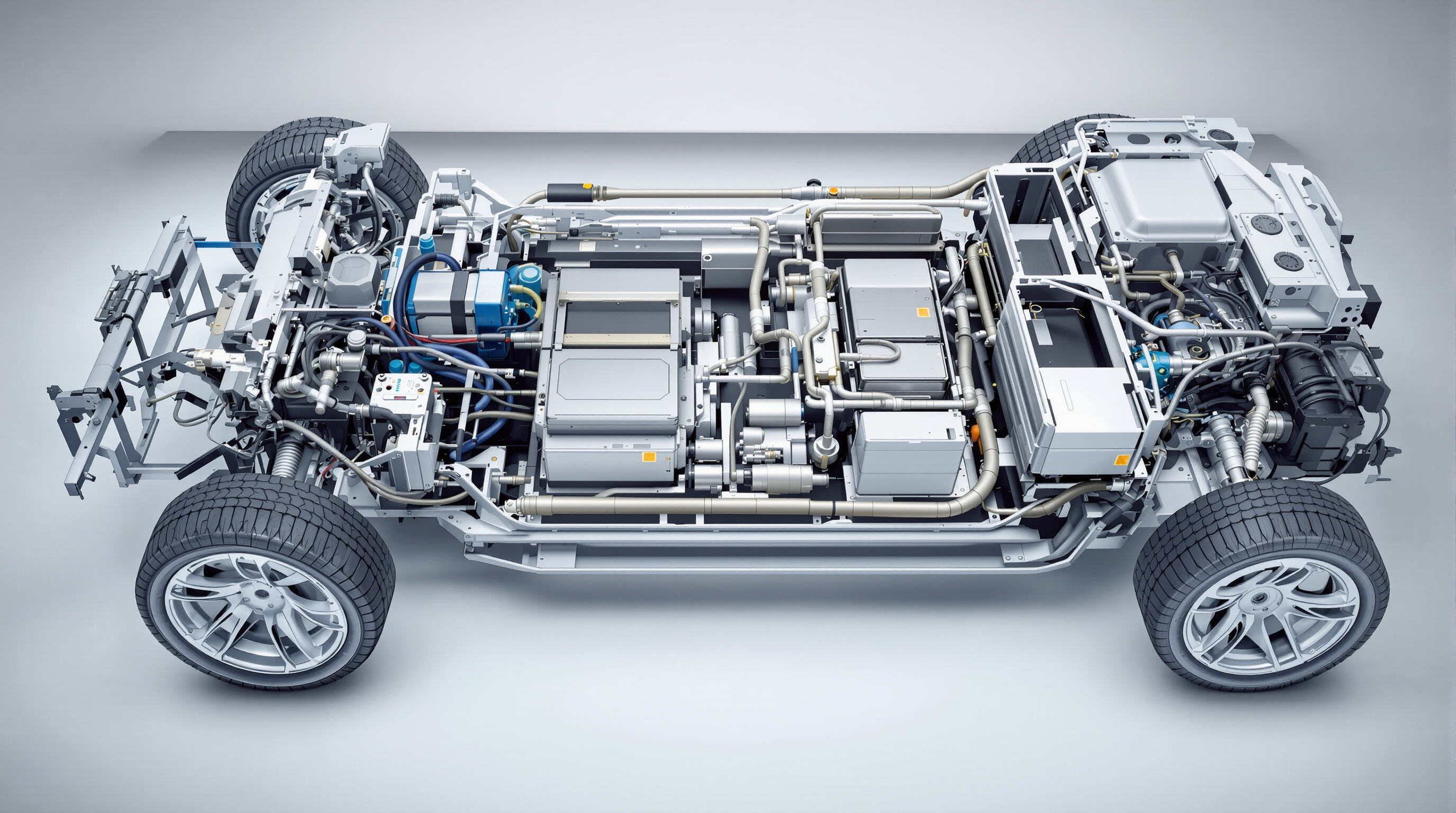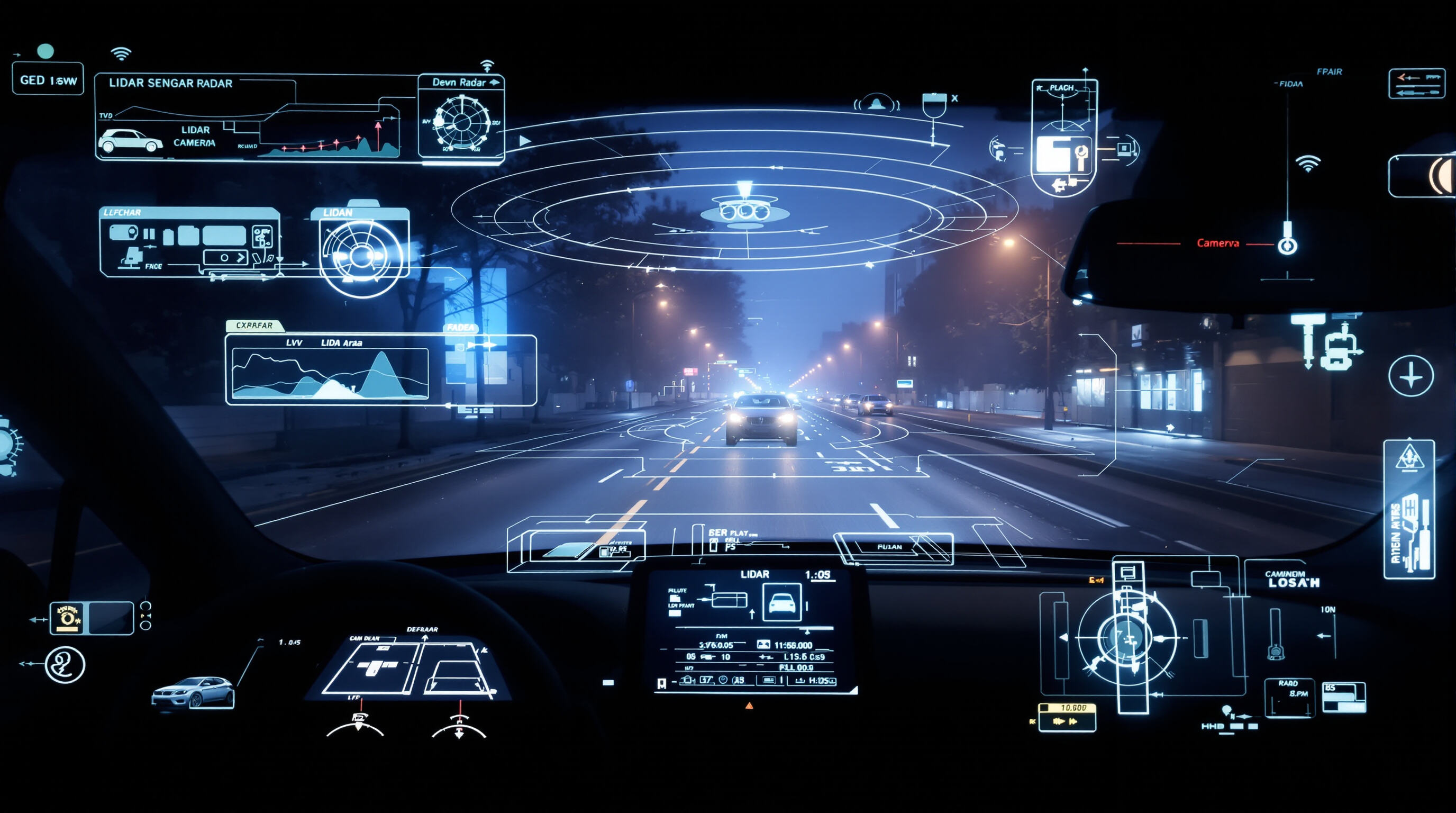BYD's Super E-Platform: The Foundation of Performance and Safety

Understanding BYD's Super E-Platform technology and its evolution
The third generation e-Platform from BYD hit the market back in 2021 and represents something pretty significant for EV architecture. Traditional car platforms tend to look at each component separately, but what BYD did here was bring together the motor system, battery management, and chassis into one cohesive package. Automotive Manufacturing Solutions reported some impressive results too - part counts dropped around 28 percent after this change, and structural stiffness went up by nearly 41%. Looking at the bigger picture, it took about ten years of concentrated research work on vertical integration to get everything working so well together. The payoff? Software updates happen much quicker now, and different models can share hardware components without any compatibility issues.
Enhanced efficiency, safety, and integration compared to legacy EV architectures
What makes the Super E Platform stand out from regular electric vehicle setups? Let's look at three main improvements. First off, it gets an impressive 93.5 percent efficiency when transferring energy, which beats standard systems by around 17 percent. That means less power gets wasted when drivers hit the gas pedal hard. For safety, they've developed something called the Blade Battery technology. This proprietary system actually halves the chances of thermal runaway problems happening during accidents according to crash tests. And then there's the hardware consolidation aspect. Instead of dealing with twelve separate electronic control units like older models required, everything now runs through these integrated domain controllers. The result? A massive 63 percent reduction in complicated wiring harnesses and potential points where things might fail down the road. Mechanics will appreciate easier access while owners get better long term reliability.
Breakthroughs in energy density and thermal management for longer range and reliability
The platform's modular battery packs now hit an impressive energy density of around 260 Wh per kg, mainly because they're using silicon-doped graphite anodes. That represents about a 22 percent jump compared to what was possible back in 2020. For keeping things cool during those rapid charges, there's a direct cooling system that keeps individual cells within just plus or minus 1.5 degrees Celsius. This helps stretch out battery life considerably too, allowing for roughly 3,200 complete charge cycles before the capacity starts dropping below 80%. With all these improvements under their belt, top-end models can actually cover distances of up to 700 kilometers (that's about 435 miles) in regular driving conditions. Plus, they work pretty well even when temperatures swing wildly between minus 30 degrees Celsius and a scorching 55 degrees Celsius.
How the platform benefits popular models like Han L and Tang L
The Han L luxury sedan makes great use of its platform's structural strengths to hit 0 to 60 mph in just 3.7 seconds, which puts it on par with those expensive European electric vehicles but at around 40% less money. Looking at the Tang L SUV, it has this smart system that distributes torque adaptively between the front and rear wheels. This gives significantly better grip when driving off road, roughly 37% improvement over traditional mechanical AWD setups according to testing. Safety is also a strong point for both models. They feature sophisticated crash energy management systems that have earned them top marks in C-NCAP evaluations. Tests show these cars maintain about 27% greater integrity in the passenger area during side impacts than many competitors manage.
Performance and Driving Dynamics of BYD's Han L and Tang L
Powertrain design, acceleration, and handling characteristics
Both the BYD Han L EV and Tang L come equipped with powertrain systems that can scale from around 500 to as much as 810 kilowatts of power. For those who want serious acceleration, the dual motor versions hit 100 kilometers per hour from a standstill in just 2.7 to 3.9 seconds flat. What makes these vehicles stand out is their proprietary silicon carbide inverters which deliver an impressive 97.5 percent energy efficiency without sacrificing the smoothness of throttle response when driving. Looking at the Han L specifically, it has a remarkably low center of gravity at about 1,505 millimeters tall combined with almost perfect 50/50 weight balance across all four wheels. Despite measuring over five meters long, this setup gives drivers surprisingly agile handling characteristics that still manage to feel comfortable for daily commutes on regular roads.
Dual-motor AWD and torque vectoring for superior traction control
The system uses two motors working together - a front one rated at 230 kW and a much stronger rear motor producing 580 kW. Together they create around 860 Nm of torque. What makes this interesting is how quickly it can shift power between wheels. The car constantly checks information from those 48 little sensors inside the vehicle every 10 milliseconds or so. This electronic approach works better than traditional mechanical systems when roads get slippery or covered in ice. Testing on actual roads showed about 18% faster reaction times compared to older BYD models. Even though the Tang L has quite a long wheelbase measuring 2,950 mm, drivers still experience sharp handling through corners thanks to this responsive power distribution system.
Real-world performance in urban and highway driving conditions
| Metric | Han L EV (CLTC) | Tang L DM (Combined) |
|---|---|---|
| Range | 701 km | 1,270 km |
| 10-70% Charge Time | 6 minutes* | N/A (PHEV) |
| Fuel Efficiency | 15.2 kWh/100 km | 5.8 L/100 km |
*Using 1000V 430kW DC charger
Urban drivers gain from 30% regenerative braking efficiency at low speeds, recovering up to 18 kW in stop-and-go traffic. On highways, performance variants accelerate from 80-120 km/h in just 2.1 seconds, facilitating confident overtaking.
Integration with the Super E-Platform for optimized performance
Both models utilize a 1000V electrical backbone that supports simultaneous dual-port charging at a 10C rate, eliminating bottlenecks found in 400V systems. Cell-to-chassis battery integration reduces mass by 110 kg compared to modular designs and boosts torsional rigidity by 39%, preserving handling precision under hard acceleration and dynamic driving.
Ultra-Fast Charging and 800V Architecture Across BYD's Lineup
Technical Overview of Ultra-Fast Charging Capabilities in BYD Vehicles
The BYD 800V system incorporates silicon carbide chips along with liquid cooling to handle those impressive 430kW charging speeds. Take the Han L model for instance it gains back around 400 kilometers worth of driving range within just five minutes when everything is working perfectly, according to tests. What makes this really stand out is how much better it handles energy waste compared to older 400V tech about half as much loss actually. Plus their battery cells are designed in a way that generates far less heat even when charging at these lightning fast rates. This combination helps maintain performance without overheating issues that plague many competitors.
800V Electrical Architecture and 430kW Peak Charging: Benefits for Users
The high-voltage system delivers tangible benefits:
- 15% faster charging than competing 800V implementations
- 250 km of added range in 10 minutes under real-world use
- Forward compatibility with future 1,000V charging infrastructure via modular upgrades
Additionally, thinner power cables reduce weight and improve interior packaging without sacrificing performance.
Range Recovery in 10 Minutes: Practical Expectations and Infrastructure Needs
BYD has ambitious plans to install around 4,000 ultra fast charging stations throughout China by the year 2026. However, right now most electric vehicle owners can only expect to gain between 180 and 220 kilometers of driving range after just 10 minutes at the current 300kW charging points available today. The infrastructure demands are pretty staggering too. Every single charging station needs a massive 1.2 megawatt connection to the power grid, which is basically enough electricity to run about 300 average households simultaneously. This reality makes it clear why we really need better smart grid technology and some kind of energy storage solutions if we want to roll out these high speed charging options across the entire country.
ADAS and the 'God’s Eye' Driving System: Advancing Intelligent Safety

Sensor Configuration and ADAS Integration Across Modern BYD Models
BYD cars today come equipped with an impressive array of sensors for their advanced driver assistance systems. These include 12 ultrasonic radars, 5 millimeter wave radars, plus 13 high resolution cameras that give the vehicle complete visibility all around. Smart computer programs analyze all these sensor signals as they happen, spotting things like changes in road surfaces, people walking nearby, and traffic signs. What really stands out is their special "God's Eye" feature which combines information from LiDAR technology and thermal imaging. This fusion helps the car see through tough situations like heavy fog or when visibility is poor at night. According to research published by AKeyo AI in 2024, this combination keeps object detection accuracy above 99 percent even under challenging weather conditions.
Functionality of DiPilot 100/300/600 and Differences in Autonomy Levels
BYD offers tiered autonomy through its DiPilot system:
- DiPilot 100: Core L2 features including adaptive cruise control and lane-centering assist
- DiPilot 300: Advanced L2+ capabilities such as automated lane changes and predictive speed adjustment
- DiPilot 600: Highway navigation with hands-free steering up to 130 km/h
The DiPilot 300 excels in city environments, adjusting following distance every 0.15 seconds based on traffic flow. Higher trims incorporate BeiDou satellite positioning to limit GPS drift to less than 10 cm—essential for accurate lane-keeping in complex interchanges.
Real-World Effectiveness: Collision Avoidance and Lane-Keeping Accuracy
Tests have found that BYD's advanced driver assistance system stops around 74% of possible rear-end crashes by applying brakes early, which is way better than the 58% benchmark for basic systems according to IIHS data from 2023. When it comes to keeping vehicles within lanes, especially on twisty roads, the system stays accurate about 94.7% of the time compared to competitors who manage only about 89.1%. This improved performance comes down to the radar technology that covers 210 degrees sideways. During crash tests simulating emergencies, the system spots people walking across the road 2.3 meters earlier than what most humans would notice while driving at 60 km/h. That represents roughly a 40% jump in capability when compared to older versions of similar systems as reported in the Dewesoft Automotive Report.
Democratizing Smart Driving: L2+ Autonomy in Affordable BYD Models
Bringing Advanced Driver Assistance to Budget-Friendly Models
The Chinese automaker BYD is making smart driving technology more accessible by putting L2+ autonomous features into their budget electric vehicles. By controlling production vertically and cutting sensor costs down by about 40% according to recent mobility reports from 2025, they're able to offer things like adaptive cruise control, automatic parking systems, and crash avoidance tech on cars priced below twenty grand. What's interesting here is how this aligns with what Chairman Wang Chuanfu has been saying for years - he really believes that top notch safety shouldn't just be something people can check off as an extra option when buying a car. That's why BYD launched their Smart Driving For All program back in 2023, blending artificial intelligence advancements with traditional large scale manufacturing techniques to bring these technologies to mainstream consumers at reasonable prices.
Cost-Effective Engineering Without Compromising Core Safety Standards
The company keeps costs down by developing important parts themselves, including those fancy 4D imaging radars and central electronic control units. They produce over 3 million vehicles each year, which means they can afford to maintain their high safety standards (ISO 26262 ASIL-D) even for the most critical systems. Their own special software actually processes around 25% more information from the surroundings for every watt used compared to older technology. This lets them do things like stay properly in lanes and spot people walking nearby without needing expensive LiDAR equipment. Independent testing shows these advanced driver assistance features work just as well as what luxury brands offer in about 9 out of 10 city driving situations.
Future Outlook: Scaling Intelligent Features Across Global Markets
BYD is aiming to roll out cars with advanced driver assistance systems across more than 15 developing countries within the next few years. Their E-Platform design makes it possible to quickly implement cutting edge features such as routes that predict traffic patterns ahead of time and special areas where drivers can take their hands off the wheel safely. Industry experts think this expansion might cut down on the big differences in pricing between regions for smart vehicles around 2028. This would help electric cars become more popular in places experiencing rapid growth, particularly in Southeast Asia and Latin America, where people are showing increasing interest in EVs year after year, with some estimates suggesting demand there grows roughly 21 percent each year.
Frequently Asked Questions
What is BYD's Super E-Platform?
BYD's Super E-Platform is an integrated EV architecture combining motor systems, battery management, and chassis into a cohesive package, improving efficiency and structural stiffness.
What safety features are included in BYD's E-Platform vehicles?
BYD vehicles include Blade Battery technology to reduce thermal runaway risks and sophisticated crash energy management systems for enhanced safety.
How does BYD's ultra-fast charging technology work?
BYD utilizes an 800V system with silicon carbide chips and liquid cooling, allowing for rapid charging speeds and reduced energy losses.
What is the 'God’s Eye' system in BYD cars?
The 'God’s Eye' system combines LiDAR and thermal imaging to enhance visibility under challenging conditions, maintaining high object detection accuracy.
How is BYD making smart driving accessible?
BYD is incorporating L2+ autonomous features into budget models by reducing sensor costs, promoting safety as a standard rather than an optional luxury.
Table of Contents
- BYD's Super E-Platform: The Foundation of Performance and Safety
- Performance and Driving Dynamics of BYD's Han L and Tang L
- Ultra-Fast Charging and 800V Architecture Across BYD's Lineup
- ADAS and the 'God’s Eye' Driving System: Advancing Intelligent Safety
- Democratizing Smart Driving: L2+ Autonomy in Affordable BYD Models
- Frequently Asked Questions

